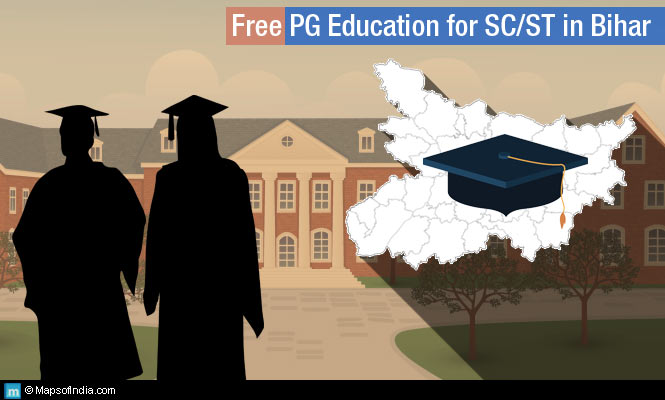 India is a land of diverse culture and traditions. The nation has also seen the caste system from 1500 BC to 1952 AD, till it was abolished in the Constitution of India. People belonging to the lower castes faced discrimination, and lack of education rendered them weak. The Government of India recognised the importance of development of these weaker sections of the society, and the need for affirmative action like providing them quality education and higher education, to accelerate the integration of Scheduled Caste (SC) and Scheduled Tribe (ST) into the mainstream society. Thus reservation for SC/ST came into existence vide Government of India Act, 1935. Over the years, the provisions and reservations for the depressed class, as they were formerly known, have been amended according to the requirements.
India is a land of diverse culture and traditions. The nation has also seen the caste system from 1500 BC to 1952 AD, till it was abolished in the Constitution of India. People belonging to the lower castes faced discrimination, and lack of education rendered them weak. The Government of India recognised the importance of development of these weaker sections of the society, and the need for affirmative action like providing them quality education and higher education, to accelerate the integration of Scheduled Caste (SC) and Scheduled Tribe (ST) into the mainstream society. Thus reservation for SC/ST came into existence vide Government of India Act, 1935. Over the years, the provisions and reservations for the depressed class, as they were formerly known, have been amended according to the requirements.
On February 3, 2015, the Bihar Government decided to extend free education to the SC/ST and girl students till post-graduation (PG). Cabinet Secretariat Department’s Principal Secretary B Pradhan said, “According to latest Government data, there were 4.05 lakh SC, ST and girl students studying undergraduate courses in the State, but the figure declines sharply to just 10,870 students belonging to these categories at the PG level.” This input denoted that many students dropped out of educational system at the PG level, most probably because of lack of financial resources; and to bring about a positive turnaround to the situation, the Bihar Government decided to provide free education to these students till PG level. The Government would have to reimburse the financial loss to the colleges and universities at a cost of Rs 29 crore annually.
Will the other States follow suit
Bihar is the first State in India to have come up with the scheme of free education for these backward classes for higher education. In November 2014, the Central Government decided to reimburse the interests on loans taken by SC/ST students. Delhi provides amenities like free stationary, merit scholarships, and educational loan schemes for the SC/ST. Tamil Nadu State Assembly raised the demand for free education for SC/ST students in the year 2013, which has not yet materialised.
The objectives for educational advancement of SCs and STs include improving the literacy rate, female literacy rate, universal education, improving the educational status, increasing the enrolment rate, reducing dropout rate, repetition and retention rate at all levels, improving the pass percentage in Std X and XII, improving the performance in competitive examinations, improving the quality of teaching and encouraging the integration of ST with the rest of the society. Imparting free education to them till PG level will surely attain many of the aforesaid objectives.
Apart from these noble objectives, there is also the question of vote banks. Many States may follow suit in providing free education just for the sake of garnering votes. In this, one should keep in mind that the objective of any deed is very important to decide its outcome. An objective of wanting to pull up the status of the backward classes through free education would also involve inclusion of other important aspects like improved quality of teaching, well equipped schools with necessary infrastructural facilities like computer labs, etc. Every State which plans to impart free education to the SC/ST students should keep in mind to include an overall development of the educational system for optimum results. Any venture with the wrong objectives like that of garnering votes could backfire with many students holding degrees but without real knowledge, they would fail in the job market, resulting in increase in the population of unemployed.
Conclusion
Education and literacy are essential for the growth of any nation. Educating the underprivileged will indeed ensure the integrated growth of the nation. Article 46 of the Constitution states that, “The State shall promote, with special care, the education and economic interests of the weaker sections of the people, and, in particular of the Scheduled Castes and Scheduled Tribes, and shall protect them from social injustice and all forms of social exploitation”. If the States of India are able to provide free quality education to the SC/ST, without any ulterior motive, then the day when India leads all other nations in the world is not far away. It is time to educate the future generation.
It’s time for a better tomorrow.
Read Also:
Vidya Lakshmi Portal Education Loan Scheme
Education for all: Smriti Irani’s big challenge
Most Beautiful Campuses in India
What is CBCS or Choice Based Credit System? How Does It Work?
Educational Frauds In India : Fake Universities
Sustainable Development Education in Schools
Education and Awareness Key to Eradicate Tuberculosis
India’s B-school Factories: A Damning Expose of Our Education System
A Non-Working Education Policy? Quality Is the Answer
Education Sector: A Fertile Ground for Business, A Playground for Politicians
Beyond Right to Education: UNICEF on How to Ensure Quality



